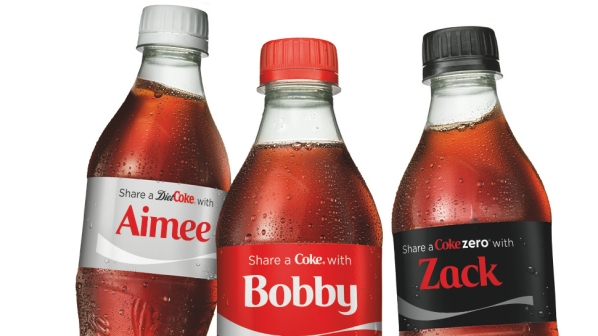
“In 1964 I was a little girl sitting on the linoleum floor of my mother’s house in Milwaukee watching Anne Bancroft present the Oscar for best actor at the 36th Academy Awards. She opened the envelope and said five words that literally made history, ‘The winner is Sidney Poitier.’ Up to the stage came the most elegant man I had ever seen. I remember his tie was white, of course, his skin was black, and I had never seen a black man being celebrated like that.”
This is the beginning of the eloquent speech Oprah Winfrey gave at the 2018 Golden Globes. As you can see, her descriptive details paint a powerful picture of her childhood. This isn’t the first time Oprah used storytelling to capture an audience’s attention – in fact, her ability to convey visuals through words made her the household name she is today.
Appealing to people’s emotions through interesting stories makes them feel connected to you. The same goes for your brand and customers, where effective storytelling often leads to higher engagement and sales numbers. It also makes customers more likely to remember your business, since messages delivered as stories are 22x more memorable than just facts.
Stories show your passion, competence, and most importantly, what sets you apart from your competitors. So, how do you attract customers with emotion-inducing words? Here are 4 storytelling tips that’ll earn your customers’ trust:
1. Let your happy customers do the talking

Your satisfied customers can be a huge asset when it comes to attracting potential customers. Most customers will be happy to speak about their experience with a brand and how it’s helped them.
Ask your customers to share their experiences with your brand on social media. This works especially well if you generate a unique hashtag they can tag in their posts. People enjoy sharing their experiences using a product and telling their friends and family about it. Take this content and reuse it on your social media pages to give potential customers an authentic picture of how your products solve customers’ problems.
You can get more in-depth by reaching out to customers or clients for an interview. It can be anyone from one of your first customers to someone you noticed on social media who said your product or services impacted their life. Put this interview up on your blog and share it across your social media accounts. Consumers are more likely to trust a peer’s opinion – take advantage of this and let them your customers do the storytelling for you.
2. Be transparent and appeal to their emotions
“Good storytelling isn’t about good content. It’s about telling a true story well.”
– Ann Handley, content marketing expert
One of the best storytelling tips to earn your customers’ trust is to be transparent. For some companies, the value proposition is a commitment to a lofty purpose (think: Tom’s Shoes). Companies like Taco Bell aren’t cause-oriented and aren’t trying to be – because they know their target customer just wants a place to get that late night snack. The key is to understand your audience and be transparent in communicating your value.
If your business wasn’t created to help people after a devastating storm or to fulfill the dream of your long-lost adopted brother, that’s okay. You don’t need an awe-inspiring personal story to catch consumers’ attention. In fact, people are more likely to relate to your story on a personal level if you keep it simple and authentic.
3. Show your personality
Humanizing your brand is an effective way to connect with your target audience. It shows you have real people behind your business. By sharing your own story, you build an emotional connection with your potential customers.
Focus on being relatable, motivational (if it’s applicable to your brand), and overall, keeping it real. Ideally, your customers can think about what it would be like to be in your shoes. If they can empathize with your story, they are more likely to buy from your business.
4. Place your customers at the center of your story
“Marketing is no longer about the stuff that you make, but about the stories you tell.”
– Seth Godin, Marketer, Author, Speaker
Every story needs a hero. When it comes to your brand story, your customers should be the champions of your product.
Your customers want to imagine themselves at the center of your story and see how using your products is going to solve their problems. This is why using hyperbole in advertising doesn’t work. Consumers are more motivated to purchase from your business if they can understand how your products are going to help them.
Nail down your buyer persona
It starts with defining your buyer persona. Give your ideal customers names, job titles, histories, and interests. This will give you a better understanding of their pain points. Now, ask yourself:
- How can my products or services solve my target audience’s problems?
- What do my customers need to make their lives better?
Once you have a complete picture of your target customers, position your content by placing them at the center of your sales stories. Often times, brands go on and on about what makes them so great. This doesn’t convince anyone who hasn’t tried their products. Instead, make your marketing and content about your target customers and you’ll have their attention.
Coca Cola engages customers with storytelling

(Image from Coca-Cola)
Coca-Cola did a fantastic job hooking their customers with storytelling content in its “Share a Coke” campaign in 2013 and 2014. For this campaign, they replaced the labels on Coke bottles with common names in each country. People across the world felt touched they could find their name on a bottle of Coke – making it an easy purchase for them.
In the first year of this campaign, over 500,000 photos were shared with the #ShareaCoke hashtag. By giving fans the opportunity to tell their own stories on social media, Coca-Cola’s campaign became a major success and is still one of their best-performing marketing campaigns to date.
Overall, the global brand recognized that tugging on heartstrings and making their product centered around their customers leads to a big payoff.
Do you use storytelling to get close to your customers? Let us know in the comments!
